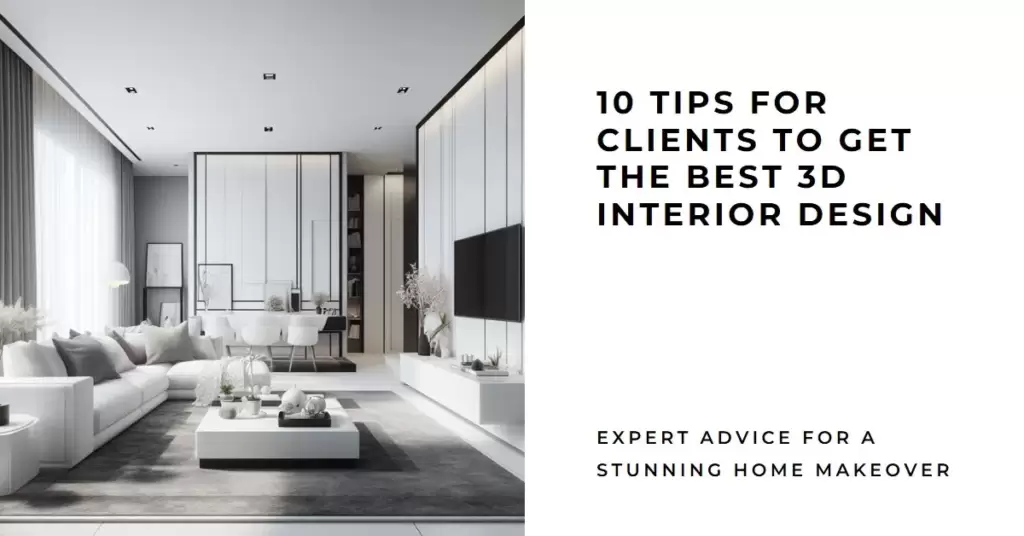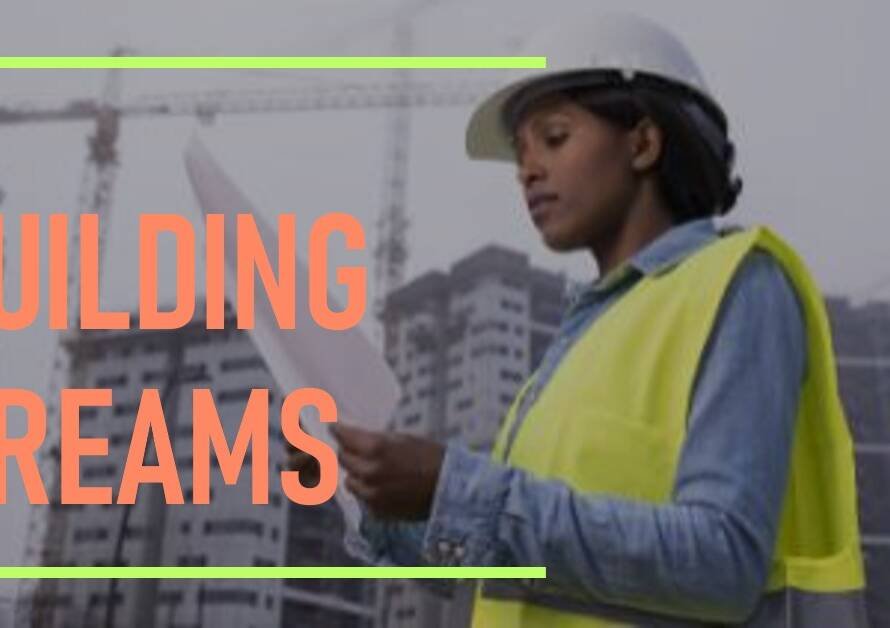
Table of Contents
Embarking on a 3D interior design project is an exciting venture, but for clients, ensuring that your vision aligns with the final outcome requires active participation. In this guide, we unveil ten invaluable tips for clients, empowering you to articulate your desires effectively and collaborate seamlessly with your interior design team.
Section 1: Define Your Style Essence
Title: Style Blueprint: Crafting Your Interior Identity
Before diving into the world of 3D interior design, take the time to define your style essence. Compile a vision board, collect images that resonate with you, and articulate the elements that embody your ideal space. Communicating your style preferences—be it modern, minimalist, or eclectic—serves as the foundational guide for the design team, ensuring a harmonious collaboration that aligns with your personal aesthetic.
Expressing your style essence goes beyond aesthetics; it encapsulates the emotions and ambiance you wish to evoke in your space. Utilize descriptive words such as “cozy,” “invigorating,” or “serene” to convey the emotional undertones you envision. By creating a style blueprint, you provide your 3D interior design team with a comprehensive roadmap to infuse your personality into every nook and cranny.
Section 2: Establish a Realistic Budgetary Canvas
Title: Budgeting Mastery: Painting Your Financial Landscape
In the realm of interior design, establishing a realistic budget is a critical foundation for a successful project. Clearly articulate your financial parameters with your design team, encompassing not just the design and decor costs but also potential contingencies. Be transparent about your priorities—whether it’s splurging on statement furniture or allocating resources for bespoke elements.
Effective budgeting is a collaborative effort, so engage in open communication with your 3D interior design team about any cost concerns or constraints. A transparent dialogue ensures that the design aligns with your financial expectations, minimizing surprises down the line. By painting a clear financial landscape, you set the stage for a seamless and satisfying interior design journey.
Section 3: Embrace Collaborative Ideation
Title: Ideation Symphony: Harmonizing Client and Designer Vision
Interior design is a collaborative dance between client and designer, and fostering open ideation is key to a successful partnership. Actively participate in brainstorming sessions with your design team, exchanging ideas and perspectives. Your input provides valuable insights into your lifestyle, preferences, and functional needs, shaping a design that seamlessly integrates aesthetics and practicality.
Utilize platforms like mood boards and collaborative design tools to share inspiration and refine concepts together. This iterative process ensures that your vision and the designer’s expertise converge into a harmonious symphony of creativity. By embracing collaborative ideation, you not only contribute to the artistic vision but also establish a sense of ownership in the final result.
Section 4: Prioritize Functionality in Design
Title: Form Meets Function: Prioritizing Practical Design Elements
Beyond aesthetics, the functionality of your space is paramount. Clearly articulate your lifestyle needs and functional requirements to the design team. Whether it’s optimizing storage solutions, creating multifunctional spaces, or accommodating specific activities, prioritizing functionality ensures that your 3D interior design transcends visual appeal and becomes a seamless part of your daily life.
Engage in detailed discussions about spatial layouts, traffic flow, and the integration of smart technologies to enhance functionality. A space that marries form with function not only reflects your taste but also aligns with the practical demands of your lifestyle. By prioritizing functionality in design, you lay the groundwork for a living environment that is as practical as it is visually captivating.
Section 5: Communicate Color Dynamics Effectively
Title: Chromatic Conversation: Articulating Your Color Palette
Color is a powerful design element that significantly influences the ambiance of a space. Engage in a nuanced conversation with your 3D interior design team about your preferred color palette. Use descriptive terms to convey the emotions associated with each hue and discuss the desired visual impact of the overall color scheme.
Consider factors such as natural light, room size, and the existing color palette of your home when discussing color dynamics. A collaborative exploration of color options ensures that the final design resonates with your sensibilities. By effectively communicating your color preferences, you contribute to the creation of an interior that not only looks appealing but also feels intimately yours.
Section 6: Embrace Texture and Material Dialogue
Title: Tactile Symphony: Conversations about Texture and Materials
Texture and materials add depth and character to a space, making them integral components of your 3D interior design dialogue. Share your preferences for materials, from the softness of fabrics to the sturdiness of woods. Discuss the tactile sensations you envision and the emotions associated with specific textures, creating a nuanced language that guides material selection.
Collaborate with your design team on exploring diverse materials that align with your aesthetic and practical considerations. Engaging in a tactile symphony of dialogue ensures that the chosen materials not only enhance the visual appeal but also contribute to the overall sensory experience of your interior. By embracing texture and material dialogue, you elevate your space to a new level of sophistication.
Section 7: Feedback Loops: Constructive Critique
Title: Design Refinement: The Art of Constructive Critique
As your 3D interior design takes shape, embrace the art of constructive critique. Actively participate in feedback loops with your design team, articulating what resonates with you and areas that may need adjustment. A constructive critique process ensures that the design aligns closely with your expectations, facilitating necessary refinements before the finalization stage.
Provide specific feedback on elements such as furniture placement, lighting choices, or any deviations from the initial concept. Encourage an open dialogue that allows your design team to understand your evolving preferences and make necessary adjustments. By actively engaging in the feedback process, you contribute to the iterative refinement of your 3D interior design, ensuring a result that surpasses expectations.
Section 8: Timeline Transparency
Title: Time as a Canvas: Transparent Conversations about Timelines
A transparent discussion about timelines is pivotal for managing expectations and ensuring a smooth 3D interior design journey. Collaborate with your design team to establish realistic project timelines, considering factors such as procurement, construction, and potential unforeseen delays. Transparency in this regard allows for a mutual understanding of the project’s cadence.
Stay engaged in regular communication regarding project milestones and timelines. Any adjustments or unforeseen challenges can be addressed proactively through collaborative problem-solving. By treating time as a canvas and engaging in transparent conversations about timelines, you contribute to a well-paced and stress-free interior design experience.


Section 9: Cultivate Flexibility and Adaptability
Title: Design Evolution: Cultivating Flexibility in Vision
Interior design is a dynamic process that may witness design evolution along the way. Cultivate a mindset of flexibility and adaptability. Be open to exploring new ideas that may enhance the overall design, and trust your design team’s expertise in navigating unforeseen challenges. A flexible approach ensures that your 3D interior design journey remains an exciting and rewarding experience.
Engage in ongoing discussions about design adjustments, and embrace the potential for positive changes that may emerge during the process. By cultivating flexibility and adaptability, you actively contribute to the creative evolution of your space, resulting in a final design that not only meets but exceeds your expectations.



